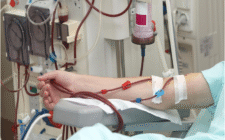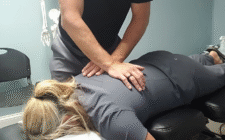1,241 Views
Introduction
According to Bharat Bhise, fungal infections are quite sudden and can affect any part of your body. Fungi are present in your body along with bacteria. However, it leads to infection when they start growing too much. Let’s check out how dermatologists determine the presence of nail fungus.
The Details
- Common symptoms – Half of all nail infections are caused by fungus and it’s especially common among adults who are over 60 years old. While you may get a nail fungus infection on your fingernails, it’s more likely to appear on your toenails, especially if you’re diabetic. The symptoms of infection caused by nail fungus are very apparent. Your nails get distorted and may appear more brittle, thickened, or even lift off from the nail bed. Apart from that, an infected nail releases a strong and foul odor. However, those aren’t the only signs. There are more subtle signs that can help you identify different types of nail infections.
- White superficial infection – White superficial infections are more common on toenails. The fungus attacks the top layers of your nail and creates white spots that are quite distinct and noticeable on your nails. Later on, these white patches cover your entire nail. As the infection progresses, your nail becomes soft, rough, and prone to crumbling. Spots on your nail may even become flaky and pitted. If you see any white spots on your nail, go to the dermatologist right away and get the necessary treatment so that the infection doesn’t worsen.
- Distal subungual infection – These are the most common types of nail infection caused by nail fungus. They can occur both on your fingernails and toenails. When the fungus infects your nails, the outer edge develops a jagged look with streaks of white and yellow across the nail. If left unchecked, the infection may invade the nail bed and underside of your nail and lead to more serious consequences that may lead to amputation.
- Proximal subungual infection – These infections can affect both your toenails and fingernails. Early signs appear as yellow spots at the base of the nail. As the infection spreads upward, your nails develop a darker yellow hue. This kind of infection usually occurs from an injury or among people with compromised immune systems.
- Dermatologist diagnosis – Other types of infections may occur in your nails and mimic the symptoms of nail fungus infection. That’s why you need to see a dermatologist for a proper diagnosis. They will collect a scraping of the nail and then look at it under the microscope to figure out if the infection is caused by nail fungus or something else. If putting it under the microscope isn’t enough, the dermatologist would send the sample to a lab and get the root of the infection analyzed and identified.
Conclusion
Bharat Bhise suggests that you take a book from the dermatologist’s page and use those symptoms and visible signs to identify nail infections early on. That way treatment is easier, less expensive, and also allows you to restore your nail to the way it was.




